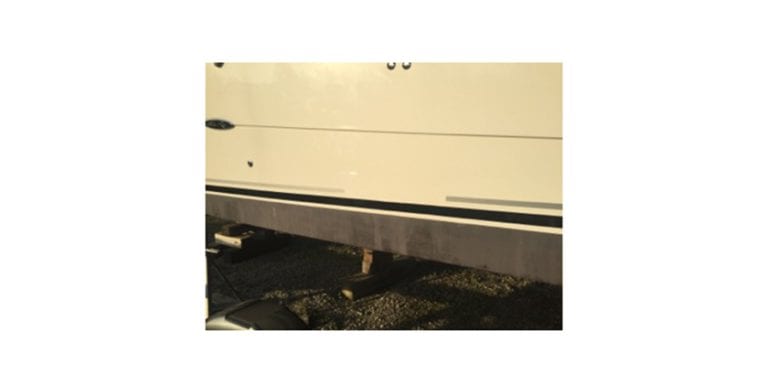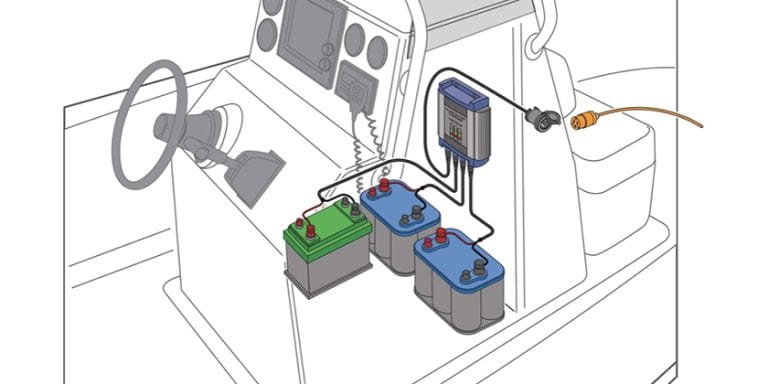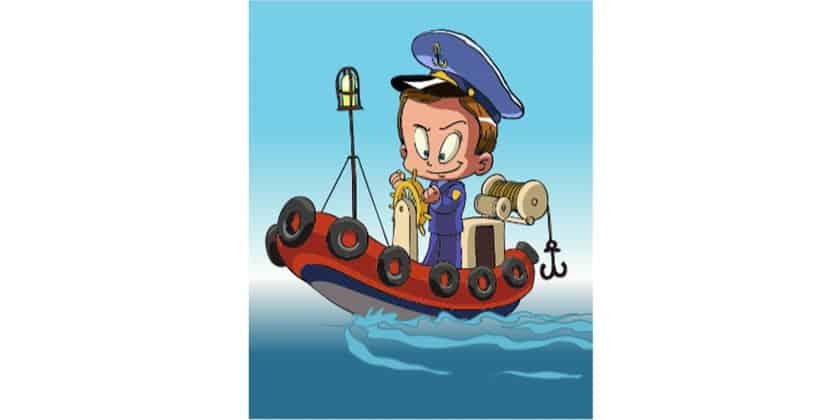Ask Andrew: GFCI protection

Jan 28, 2021
I’m often asked to take a look at a survey to complete repairs at the request on a boat owner’s insurance company. Over the years, I’ve noticed that there are some items that are considered much less ‘risk’, than others when identified on a survey. There is one item that stands out so much that I can guess it before even reading the survey. And it’s for good reason. It’s an item that I hope is never overlooked, and that boat owners should take seriously – especially when looking at purchasing an older boat: GFCI outlets.
A GFCI (Ground Fault Circuit Interrupter) outlet is a specific type of AC outlet that offers protection that is especially important on boats.
Here’s why they’re important: On a typical set-up, the AC breaker panel will have one (or more) breakers dedicated to the outlets on board. Often they are separated by fore and aft, or by port and starboard.
 Imagine that there are three outlets that run along the port side of the boat, and three outlets that run along the starboard side. Each series (3 port and 3 starboard) have a dedicated 10A breaker on the main AC panel. So, you have a hairdryer plugged in that draws more than 10A and the breaker trips. It’s doing exactly what it’s supposed to. So, why the need for additional GFCI protection?
Imagine that there are three outlets that run along the port side of the boat, and three outlets that run along the starboard side. Each series (3 port and 3 starboard) have a dedicated 10A breaker on the main AC panel. So, you have a hairdryer plugged in that draws more than 10A and the breaker trips. It’s doing exactly what it’s supposed to. So, why the need for additional GFCI protection?
Yet, the vessel’s survey identifies a lack of GFCI outlets and the insurance company reviewing the survey has asked that GFCI outlets be added before coverage is offered.
Why the added protection? On the outside, a GFCI looks like it an additional circuit breaker. There are two buttons on the front: The upper button is labeled ‘Reset’, the lower ‘Test’. It seems awfully redundant if a single 10A breaker protects all three port-side plugs, that each individual outlet is also circuit protected, right?
The answer is: A GFCI outlet offers a completely different type of protection to the breaker on the AC panel.
 Here’s how it all works:
Here’s how it all works:
The AC panel breakers are used to protect against overcurrent – too much current running through the circuit, and the breaker trips before the circuit is overloaded, potentially causing the wiring to overheat).
The GFCI is designed to protect against ground faults – which is most often caused by water or moisture entering the circuit. Remember: water and electricity don’t mix.
The AC wiring on your boat is a tri-plex wire – and to really oversimplify things – the black (hot) wire runs current to the appliance; the white (neutral or grounded) wire completes the circuit back to the source. The green (grounding) wire is present as a safety feature. In an ideal world, current never flows through the green (grounding) wire. But – in a circumstance where the black (hot) wire touches the casing of the outlet, or perhaps the black (hot) wire inside an appliance touches the metal casing of that appliance, the green (grounding) wire will provide a path for the current to flow, keeping the outlet, appliance (and boater) safe.
 The most common path, in wet environments (like on a boat…..or in a bathroom, kitchen, or out-of-doors) for electricity to run from the black (hot) wire in an unexpected way, is when water has entered, and current flows along the path that the water provides (perhaps from the hot wire to the casing of the appliance). When this happens, the green (grounding) wire is energized, and immediately provides a path (from the appliance’s casing) to ground. On a boat, the green (grounding) wire runs to a common grounding point (and could potentially run along every other appliance and receptacle in its path). Essentially, moisture entering one receptacle (or appliance), could lethally energize the entire boat. In more simple terms: water leaking into a receptacle in the head, could allow current to flow to the galley, salon, engine spaces and cockpit. Without even realizing it, touching a metal rail, hot water tank, or galley faucet leads to a shock or electrocution.
The most common path, in wet environments (like on a boat…..or in a bathroom, kitchen, or out-of-doors) for electricity to run from the black (hot) wire in an unexpected way, is when water has entered, and current flows along the path that the water provides (perhaps from the hot wire to the casing of the appliance). When this happens, the green (grounding) wire is energized, and immediately provides a path (from the appliance’s casing) to ground. On a boat, the green (grounding) wire runs to a common grounding point (and could potentially run along every other appliance and receptacle in its path). Essentially, moisture entering one receptacle (or appliance), could lethally energize the entire boat. In more simple terms: water leaking into a receptacle in the head, could allow current to flow to the galley, salon, engine spaces and cockpit. Without even realizing it, touching a metal rail, hot water tank, or galley faucet leads to a shock or electrocution.
Here’s where GFCI’s come in: They are designed to trip, breaking the path of this potentially lethal current In less than 1/30th of a second, the moment it senses current flowing through the green (grounding) wire. It’s an added protection, to stop current from energizing unexpected areas.
It can’t be overstated: that Shore power, and the power running through the receptacles aboard carry enough current to be lethal. Even if your surveyor hasn’t added it, or your insurance company hasn’t asked for an upgrade: take the time to check your outlets and confirm that each is GFCI rated. Manufacturers also recommend that GFCI outlets be tested once per month, to confirm that they are shutting off current flow correctly.
 Andrew McDonald is the owner of Lakeside Marine Services – a boat repair/maintenance firm based in Toronto. Andrew has worked in the marine industry for 12 years and is a graduate of the Georgian College ‘Mechanical Techniques – Marine Engine Mechanic’ program.
Andrew McDonald is the owner of Lakeside Marine Services – a boat repair/maintenance firm based in Toronto. Andrew has worked in the marine industry for 12 years and is a graduate of the Georgian College ‘Mechanical Techniques – Marine Engine Mechanic’ program.
Questions or comments for Andrew? Email him directly via: askandrew@lakesidemarineservices.ca




























